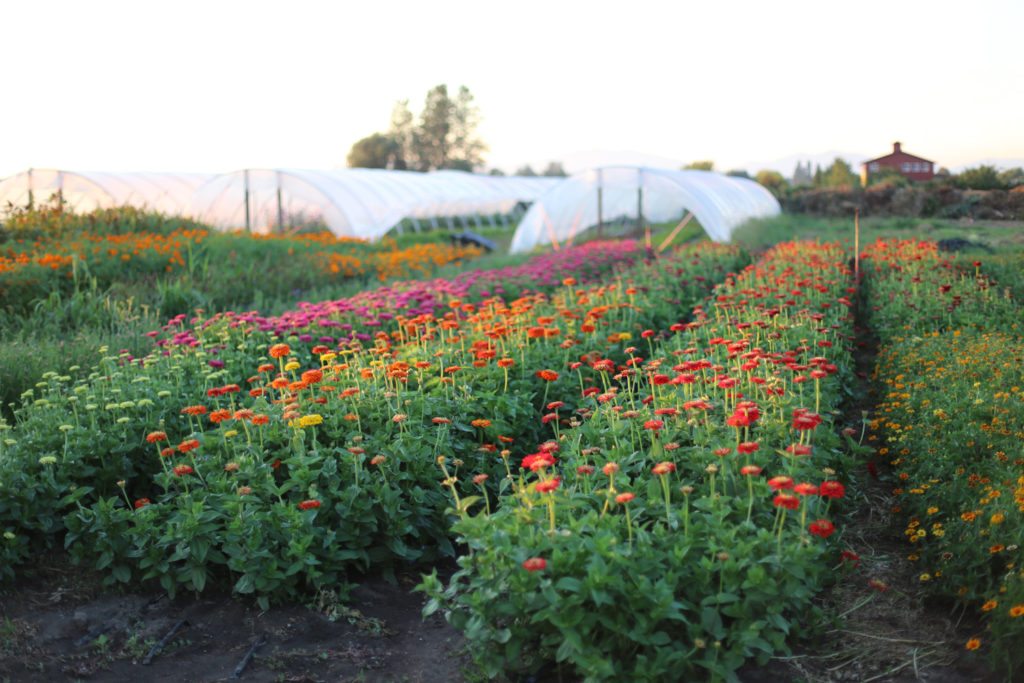
Here at Floret, we have just 2 tiny acres dedicated to flower production. We utilize every available square inch of that space growing large volumes of high-quality cut flowers that supply more than a dozen grocery stores, numerous flower shops, our on-farm workshops, and wedding couples throughout the Pacific Northwest.
We employ high-intensity production techniques that work on a small scale. As soon as one variety is just about done blooming, we have another one ready to plant in its place.
One of the biggest mistakes we made early on in our farming career was expanding. We rented a 2-acre field down the road, in addition to the 2 acres we tend here at home. We were in a hurry and were out of money, so at the rented site we barely prepped the beds, added a tiny sprinkle of compost and minimal fertilizer, didn’t use landscape fabric, and watered with overhead sprinklers instead of drip irrigation.
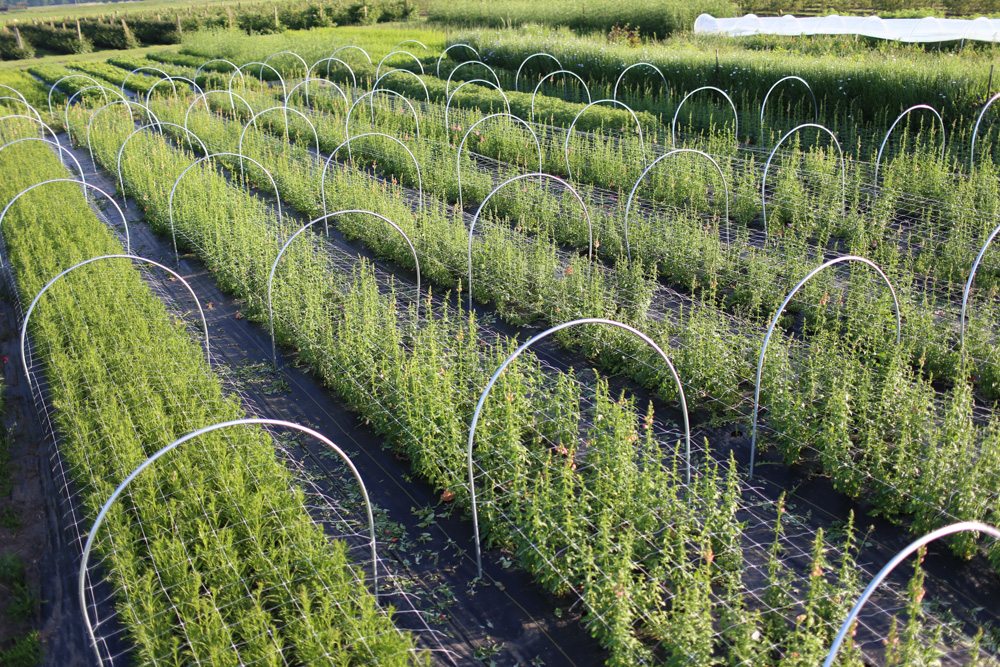
That year about killed us. We weeded and dragged hoses all summer, hired extra labor just to stay on top of the weeds, and battled insect pressure and disease like never before. We had to scrape for good-quality flowers and ended up tossing at least half of everything we grew. The crops at home were grown in heavily amended beds with consistent irrigation and produced literally three times the amount as the other field. When we did the math at the end of the year, we found that the entire rented plot had been a financial loss. In an effort to save time and money up front, we paid for it in the end.
The next year we let that field go, tilled in all of our grass paths around the farm, and added another 40 beds where we’d thought there was no way to expand. We also worked super hard to grow the best possible blooms and packed every square inch with production. That massive failure taught us such a great lesson, and our farm has been profitable ever since.
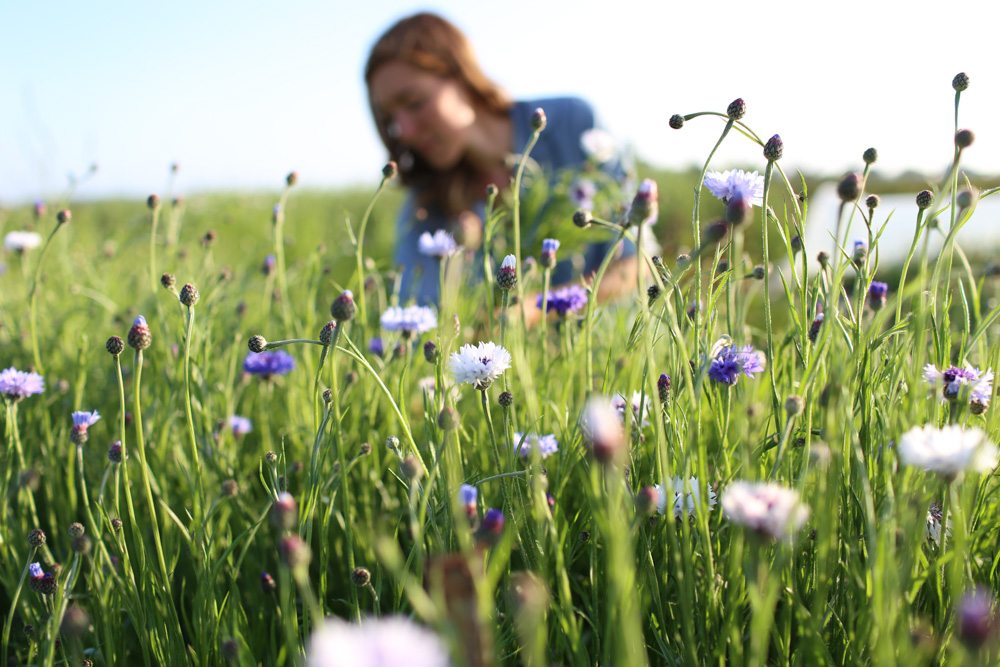 One of the biggest questions I get from budding growers is how on Earth we get so many flowers out of our little plot. Over the next few weeks I’m going to share with you our keys to success, including succession planting, soil preparation, landscape fabric, seed starting, bouquet planning, and much more.
One of the biggest questions I get from budding growers is how on Earth we get so many flowers out of our little plot. Over the next few weeks I’m going to share with you our keys to success, including succession planting, soil preparation, landscape fabric, seed starting, bouquet planning, and much more.
My hope is that the information will dispel the myth that you need a sprawling field or estate-sized yard in order to have your own flower farm or cutting garden. Our little 2-acre plot keeps our entire family plus a team of employees busy most of the year. By simply dedicating a little spot to flowers, you too can have beautiful, abundant bouquets all summer long.
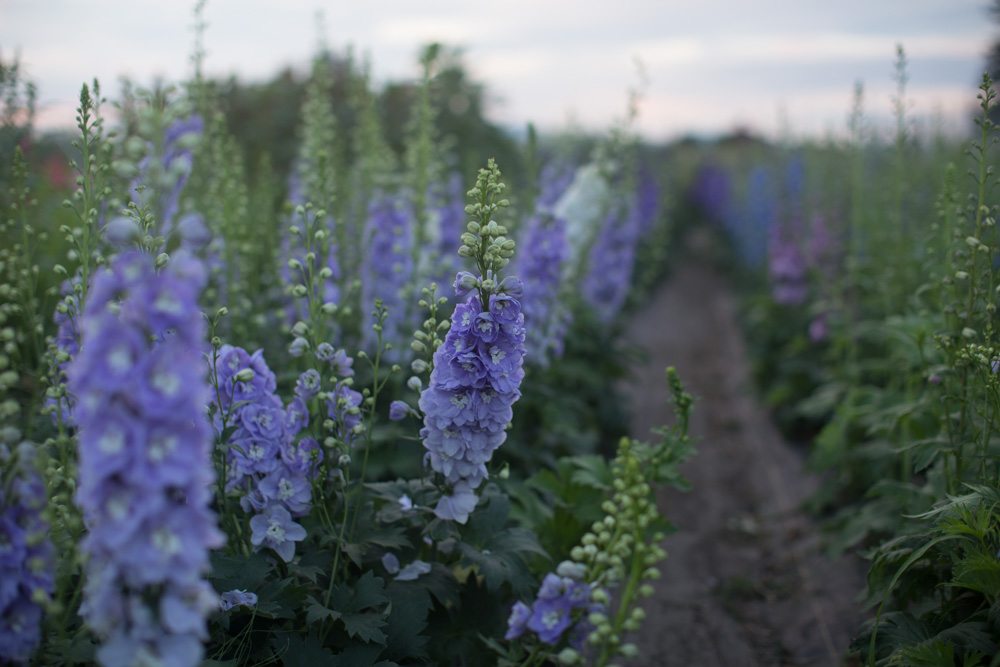 When visitors come to our farm, the first thing they comment on is how small our place is. While I have shared that we farm just 2 tiny acres more times than I can count, until folks actually see our micro farm firsthand, they rarely believe it.
When visitors come to our farm, the first thing they comment on is how small our place is. While I have shared that we farm just 2 tiny acres more times than I can count, until folks actually see our micro farm firsthand, they rarely believe it.
Like so many others, we got sucked into the myth that we needed to expand in order to grow the business. This was before the idea of Lean Farming was introduced, and a bigger plot seemed like the obvious next step for us on the road to increasing revenue. But after scaling up and nearly killing ourselves in the process, we realized that there had to be another way. The more we looked for answers, the more we realized that there was still so much good growing space going unused on our tiny farm. So we let the extra field go and refocused our efforts on maximizing our tiny 2-acre farm.
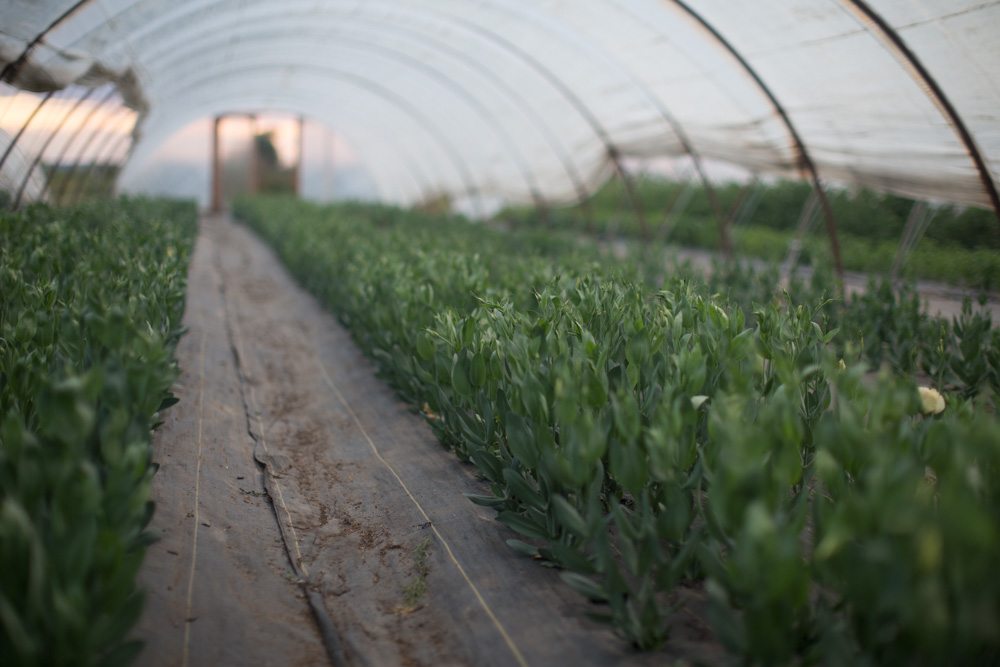
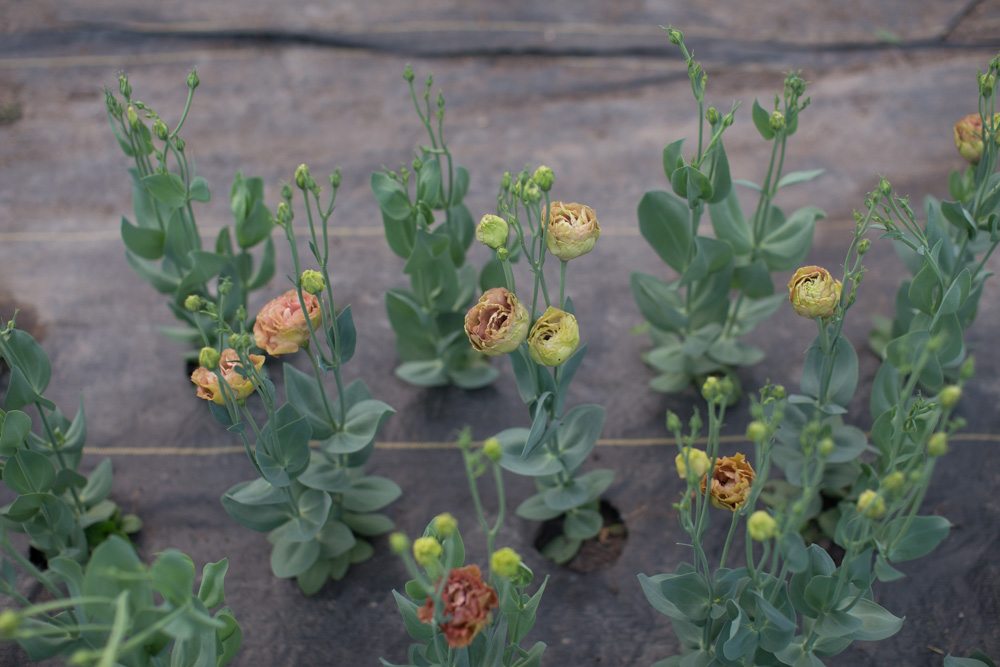 In addition to fine-tuning our succession planting schedule and preparing our growing beds with the best amendments available, we also discovered that plants can be spaced much closer together than we originally thought. John Jeavons, in his groundbreaking book How to Grow More Vegetables: Than You Ever Thought Possible, outlines an intensive approach to gardening revolving around close plant spacing. His discovery was that most plants only need a small amount of space to thrive. The key is planting on a grid versus side-by-side rows. A secondary bonus to increasing the amount of plants grown in a small space is that as they fill in their foliage canopy covers the soil’s surface and blocks out weeds. We took this idea and applied it to our flower growing with incredible results.
In addition to fine-tuning our succession planting schedule and preparing our growing beds with the best amendments available, we also discovered that plants can be spaced much closer together than we originally thought. John Jeavons, in his groundbreaking book How to Grow More Vegetables: Than You Ever Thought Possible, outlines an intensive approach to gardening revolving around close plant spacing. His discovery was that most plants only need a small amount of space to thrive. The key is planting on a grid versus side-by-side rows. A secondary bonus to increasing the amount of plants grown in a small space is that as they fill in their foliage canopy covers the soil’s surface and blocks out weeds. We took this idea and applied it to our flower growing with incredible results.
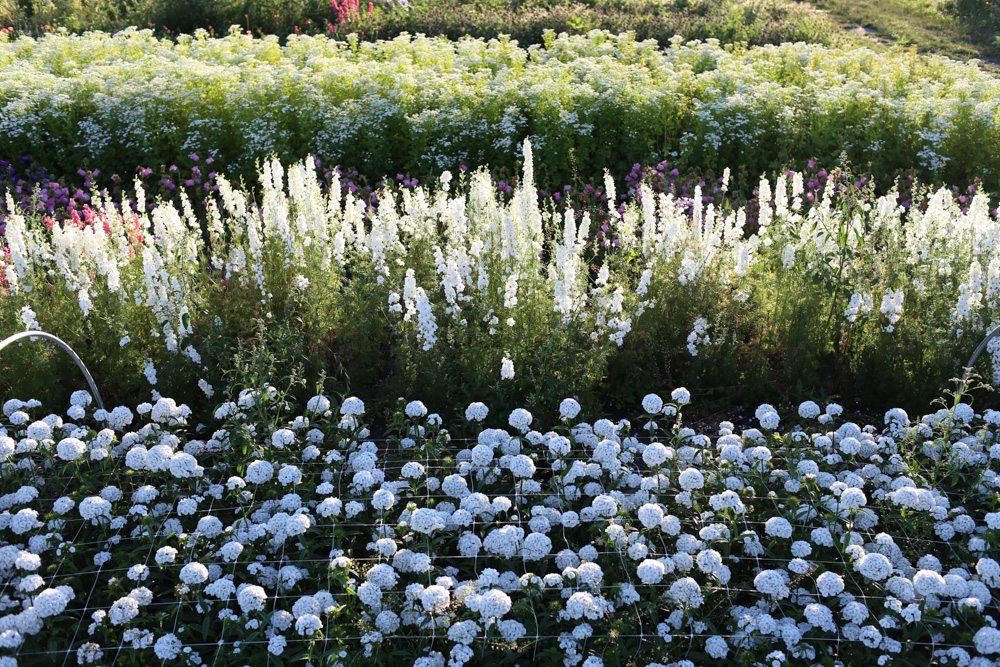 We quickly realized that we could double, possibly even triple, our production by adopting this new method of growing. It took a bit of trial and error to figure out exactly how close each variety could be planted without diminishing production or inviting disease. We finally settled on what worked the very best and simplified things by creating just six separate spacing regimes: 6×6-inch, 8×12-inch, 9×9-inch, 12×12-inch, and 18×18-inch, with the 9×9-inch spacing most frequently used.
We quickly realized that we could double, possibly even triple, our production by adopting this new method of growing. It took a bit of trial and error to figure out exactly how close each variety could be planted without diminishing production or inviting disease. We finally settled on what worked the very best and simplified things by creating just six separate spacing regimes: 6×6-inch, 8×12-inch, 9×9-inch, 12×12-inch, and 18×18-inch, with the 9×9-inch spacing most frequently used.
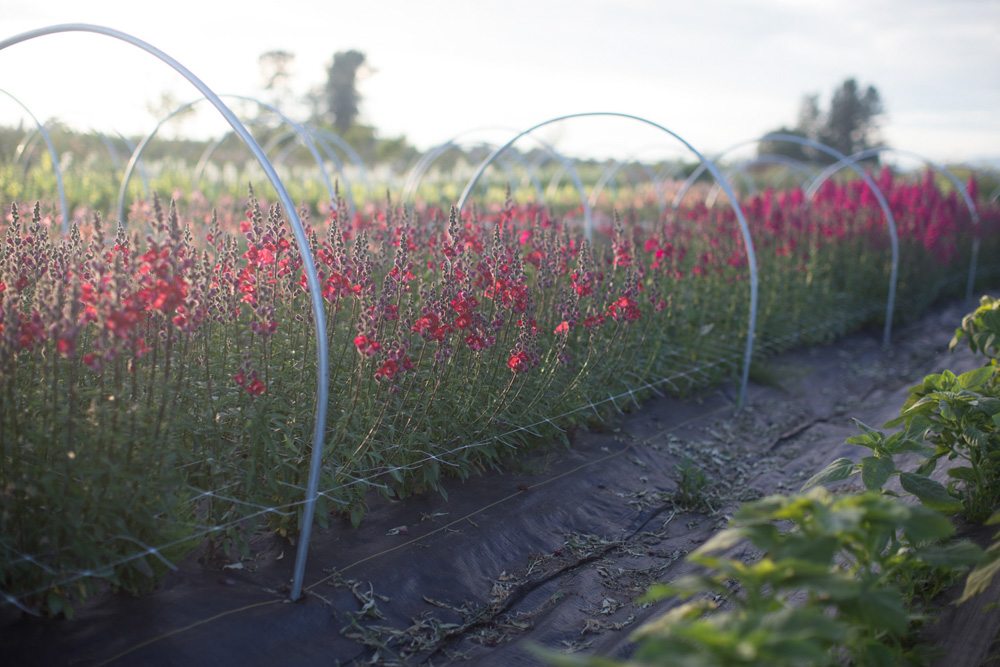 In the old days, one of our 70-foot beds would have had two rows of snapdragons planted down the center, spaced roughly a foot apart, equaling 140 plants. With the new method, plants were spaced 9×9 inches apart, resulting in five rows per bed and a total of 466 plants. That’s more than three times the amount of plants in the same bed!
In the old days, one of our 70-foot beds would have had two rows of snapdragons planted down the center, spaced roughly a foot apart, equaling 140 plants. With the new method, plants were spaced 9×9 inches apart, resulting in five rows per bed and a total of 466 plants. That’s more than three times the amount of plants in the same bed!
Our growing beds are 4 feet wide, with narrow paths in between. This allows us to fit an enormous amount of plants into each allotted growing bed. It also makes for tight working conditions, but we feel it’s a worthwhile trade-off. We use landscape fabric with holes burned into the spacing grid for each variety. Learn more about using landscape fabric for weed control.
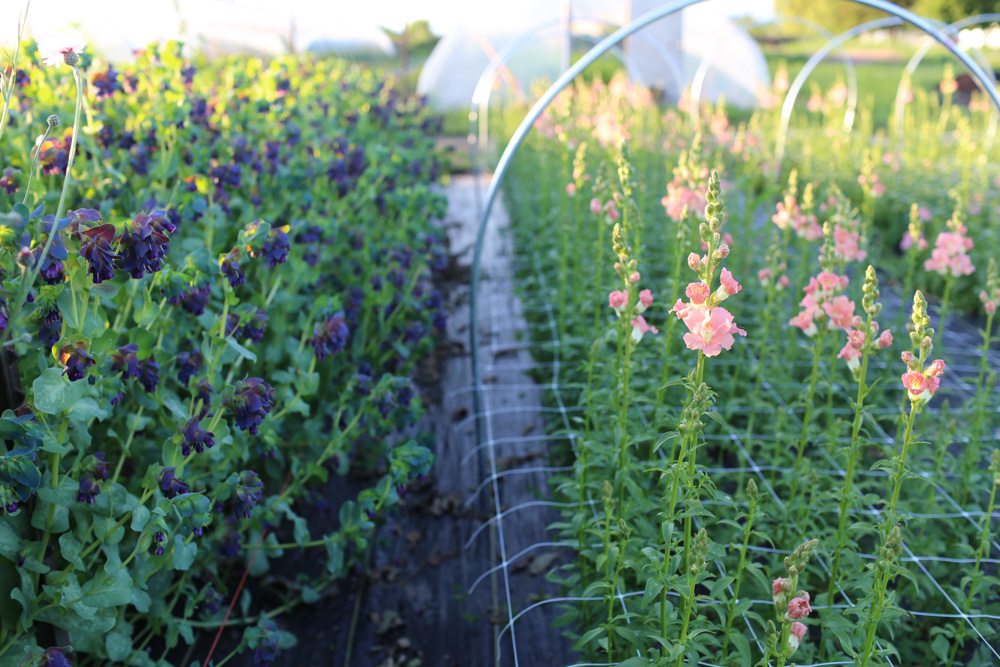 It’s important to utilize consistent bed widths and lengths, whatever you choose, throughout your planting area for ease in calculating the number of plants needed. And if you aren’t able to plant an entire bed with only one variety, be sure to plant varieties with the same spacing requirements—and roughly the same amount of days to flower—in the same bed. This is particularly important if you are using landscape fabric.
It’s important to utilize consistent bed widths and lengths, whatever you choose, throughout your planting area for ease in calculating the number of plants needed. And if you aren’t able to plant an entire bed with only one variety, be sure to plant varieties with the same spacing requirements—and roughly the same amount of days to flower—in the same bed. This is particularly important if you are using landscape fabric.
This intensive approach is suitable for both flower farmers and backyard gardeners. It will take a little testing to see what works best for you. I know many flower growers throughout the country in varying climates who have great success with maximizing their growing space by utilizing planting grids. Give it a shot and see what you think.
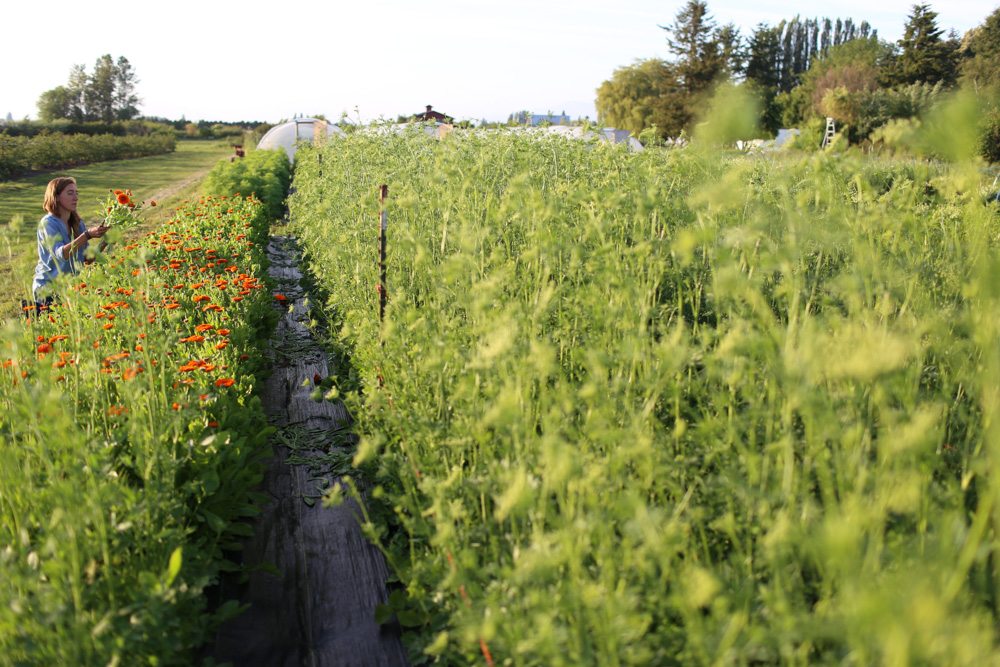
Here’s a little peek into what spacing we use for some of the most commonly grown varieties, based on our 4-foot-wide, 70-foot-long beds.
6×6-inch (15 cm) spacing = 7 rows per bed. This ultra-tight spacing is great for single-stemmed crops like lisianthus, flowering cabbage, and Bombay celosia.
9×9-inch (23 cm) spacing = 5 rows per bed. This is by far our most frequently used spacing, making up about 80% of our field, and is perfect for dianthus, zinnias, basil, frosted explosion grass, snapdragons, ageratum, bupleurum, and honeywort.
12×12-inch (30.5 cm) spacing = 4 rows per bed. This spacing is perfect for bulky varieties like bells of Ireland, celosia, amaranth, scented geranium, perilla, and lavatera.
18×18-inch (46 cm) spacing = 3 rows per bed. This spacing works for really large plants like branching sunflowers, eucalyptus, and dahlias.
Vine spacing, 8 inches (20 cm) between plants and 12 inches (30.5 cm) between rows = 2 rows per bed, one on each side of the trellis. This spacing is perfect for sweet peas, nasturtiums, love-in-a-puff, and hyacinth bean.
Dahlia spacing, 12 inches (30.5 cm) between plants and 18 inches (46 cm) between rows = 2 rows per bed. We grow our dahlias intensively, with 2 rows per bed.
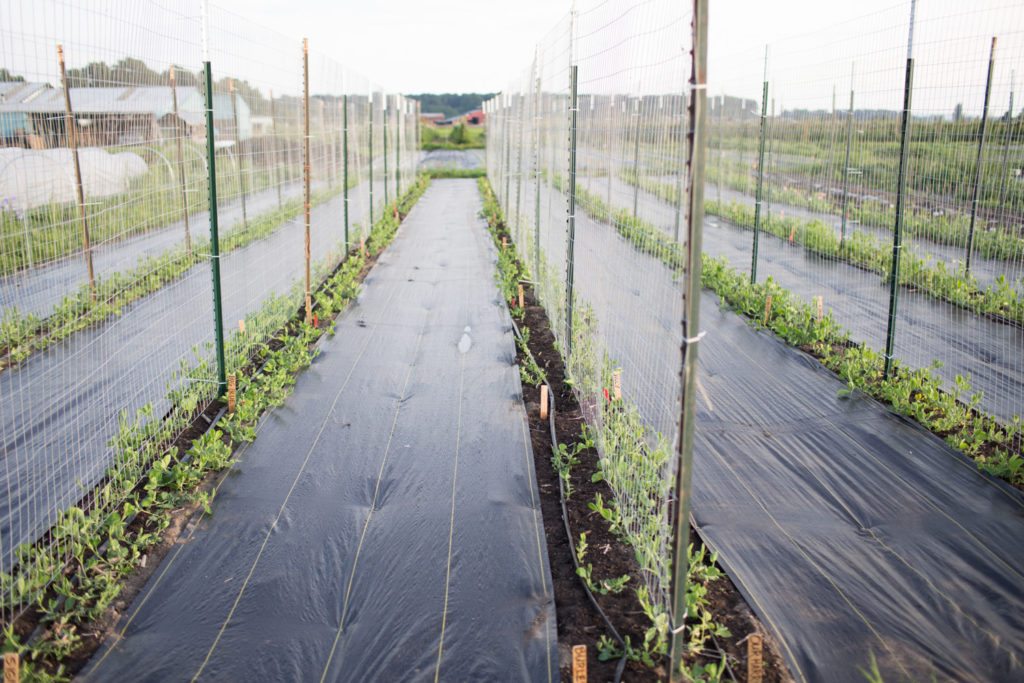
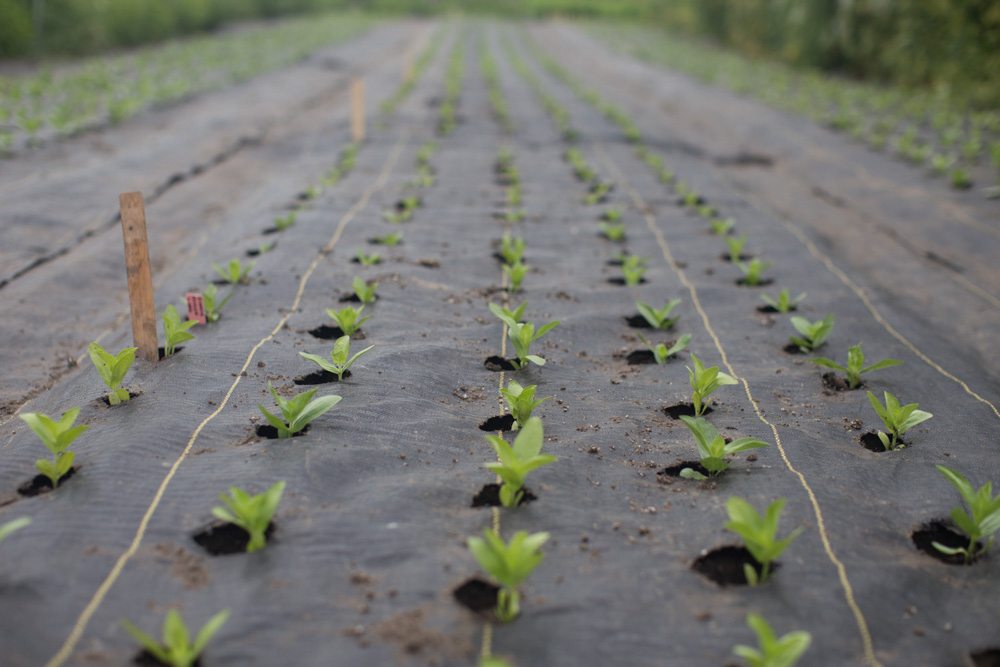
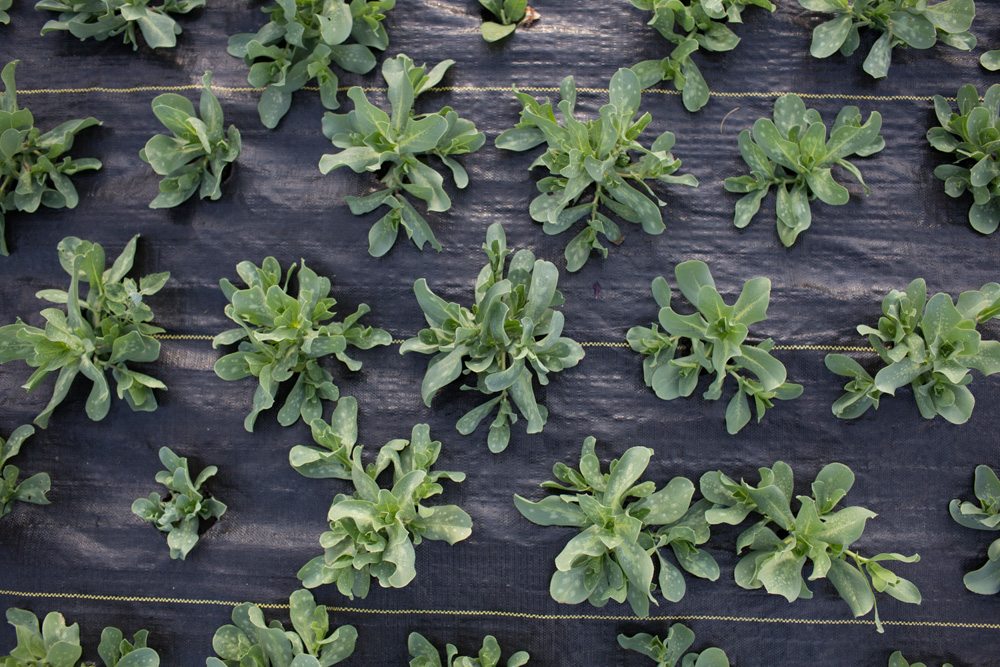
I’d love to hear about your questions and plans in the comments below. What you are struggling with, what questions do you still have, and are there any tricks or resources you love that you could share with other readers?
Please note: If you submit a comment below and it doesn’t show up right away, sit tight; we have a spam filter that requires we approve most comments before they are published.
If you find this information is helpful, I would love it if you would share it with your friends.

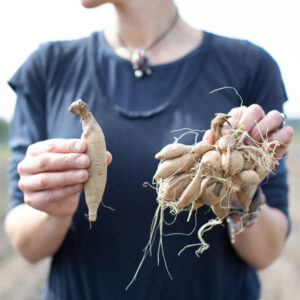

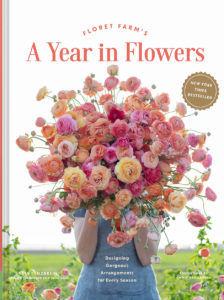
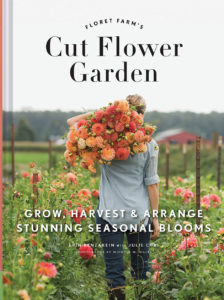


Lorna on
I’m curious how the plants fare if they are prone to mildew or other problems when planted closer. Apologies if this has already been asked :)